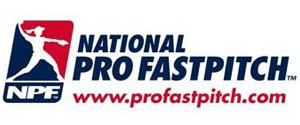I was asked in another post to give some drills for helping catchers develope blocking skills. The following article will highlight what I have found to be the biggest issue for players beiing able to block successfully.
Blocking is the Easy Part
It is common knowledge among youth baseball and softball coaches that the one play most responsible for scoring runs is not the blast over the fence or the shot in the gap; it’s the passed ball.
As coaches we often find ourselves asking why is it so difficult for our young catchers to keep the ball in front of them. Why do so many balls get by and allow runners to advance and ultimately score?
To understand the problem lets divide passed balls into 2 groups. The first group is those wild pitches that are so far over a catcher’s head, or thrown so far to their sides that even skilled catchers are unable stop them. These types of pitches will diminish as the pitchers get older and become more skilled. If the pitcher does not get more accurate as he/she ages he/she will no longer be selected to pitch, and the wild-pitch problem goes away by itself.
The second group is the group that causes the most problems for youth coaches. These are pitches in the dirt within the catcher’s reach just to their left or right, or even worse, right between their legs. Why can’t the catchers stop them? Why can’t the catchers block them? From our point of view sitting in the dugout it sure seems obvious that the ball is going in the dirt. Why is it these young catchers can’t see where the ball is going and make the proper play? Is blocking the ball really that difficult? Well my answer may surprise you. After more than 15 years of working with catchers I have come to the conclusion that blocking is really the easy part. If you have my DVD and have applied the blocking techniques suggested you could attest to the fact that nine-year-old catchers can be taught to block as well as high school starting catchers. That’s right, blocking the ball is the easy part!!
Well then, why all the pass balls? Why all the scored runs, if blocking the ball is the easy part? For years I have seen catchers as young as seven years old perfectly execute a block in a drill environment with me tossing balls at game speed. The problem is not whether they know how to block or not block, the problem is they do not know when to block. Read that again. The problem is not whether they know how to block or not block, the problem is they do not know when to block.
Their skill deficiency is not blocking but something much more difficult to learn. It’s a skill that can take years behind the plate for a catcher to develop. The skill? Pitch recognition.
So we ask, what can be so hard about recognizing that a pitch needs to be blocked? We as coaches can clearly see from the dugout that a pitch is going in the dirt, but we see the pitch from the dugout, from the side, not from the most difficult angle, the catcher’s view. Recognizing the trajectory of a ball going into the dirt through the catcher’s eyes is much more difficult. Most often by the time the catcher recognizes a ball is going in the dirt it is too late for them to block the ball and the only reaction that remains is to stand up and run to the backstop to retrieve it.
The Math
If pitch recognition is the problem, just how much time does a catcher have to recognize the ball is on a flight path that will require him/her her to block it? Here is some simple math to ponder.
For youth baseball I will use 45 feet as a common home to mound distance. If we assume the pitcher actually releases the ball four feet in front of the mound then the actual distance the ball is thrown is 41 feet. Conversely, since the catcher sets up approximately four feet behind the plate the actual travel distance to the catcher is back to 45 feet.
Using 50-MPH as a reasonable speed for twelve-years-old and under we find that speed over that distance equates to 73 feet per second. So a ball traveling from the pitcher’s release point to the catcher’s glove 45 feet away will take approximately .6 seconds. Yes six whole tenths of a second to find the ball after release, get a fix on its flight path, make the decision to block, and then to muster the technical expertise to actually block the ball properly!
For the girl’s game the numbers are similar; a 45-MPH pitch thrown from 40 feet away travels at 58 feet per second. So from release point to the catcher’s glove 40 feet away the time to react is also .6 seconds.
The point of the math lesson is to help coaches realize just how little time these 12 and under catchers have to figure out they need to block the ball, let alone actually execute proper blocking techniques. Remember this math the next time you yell at a catcher for not getting down to a ball in the dirt fast enough.
Receiving Stance
Before I explain how to train catchers in pitch recognition let me share something else that significantly handicaps most youth catchers when they try to block. I find that a key reason why players struggle to get to the ground quickly and block balls properly is improper receiving stance.
Catchers must be in a stance that allows their first move to be down, rather than up when they begin to execute the block. The easiest way to accomplish this is to insure that their feet are far enough apart so their heel are in contact with the ground, toes are pointed up the baselines and their thighs are parallel to the ground. If they are in a deep crouch, like they should be with no runners on, then their hips will have to go up before they can begin to move towards the ground. A deep crouch will only add to the amount of time it takes to block a ball by making the athlete travel upward before they are able to drive to the ground. Also, their throwing hand should be out front behind the glove with their hand in a fist. Have the fist touch the glove so it is positioned between the index finger and thumb of the glove hand. With the throwing hand out front it makes the entire blocking motion very symetrical with both sides of the body working together.
Pitch Recognition Training Process
First and foremost realize that this is a process, a process that will take time. It may take hundreds if not thousands of pitches to reach a consistent level of performance. Coaches must realize that a ten-year-old who can learn the mechanics of blocking in few short lessons may take three or more seasons before he/she is proficient in consistently reading pitches.
When beginning this drill have the catcher get in their runners on base stance.
Remind them they need to block all balls in the dirt and receive properly all pitches that do not require blocking.
Inform them the situation is bottom of the last inning, you are up by one run and the tying run is on third.
Position yourself half the normal distance between home and the mound. This allows the coach to throw the ball more accurately each time.
Throw the first two pitches at least one foot over the catcher’s head. They will obviously not try to block these two pitches.
Throw the next two pitches in the dirt three feet before the plate. The catcher should immediately recognize these balls are in the dirt and immediately move to block.
Mix the next few pitches so they are thrown very high, and very low. Observe if the catcher successfully identifies and reacts properly to each pitch. During this particular part of the drill sequence what is most important is the catcher’s reaction. We are looking to see if the catcher CLEARLY demonstrates the ability to read the pitch location and responded accordingly. It is less important if the block is technically correct.
Once the catcher masters the above move the pitches such that high pitches are lower and more in the catcher’s range, and the low pitches bounce closer to the catcher. See if he/she begins to balk and gets caught in that nasty place between blocking and receiving.
You may find that the catcher will start to read the low pitches incorrectly as soon as the ball hits the ground just past the back point of the plate.
As you begin to throw more pitches that are in the strike zone you will begin to see the hesitation appear as the catcher is struggling to read the pitches destination. When you throw a pitch at the knees you may find the catcher actually drops to block and gets hit in the mask. Likewise a pitch low and away that clearly should be blocked you may see them jab their glove out at it at the last second and try to catch it. The goal is to find that upper and lower limit when he/she seems to start having trouble reading whether to block or receive and drill in thatrange.
When you see their proficiency growing increasethe velocity in small increments to keep them challenged.
For catchers twelve and under, a good benchmark in a game situation is having your catcher read the pitch correctly to block 50% of the time when the ball is going into the dirt, and then execute proper blocking techniques 10% of the time. In the beginning be satisfied that they were able to correctly determine where the pitch was headed and began to execute the correct skill. The ball will still get by them since they are still using too much of the .6 of a second to read the pitch, not allowing enough time to actually execute the block.
The ability to read the pitch is a learned skill and time must be given to develop this skill in practices.
Fastpitch Discussions
Blocking is the Easy Part
5 posts
• Page 1 of 1
Last edited by catchingcoach on Tue Jan 01, 2008 8:16 pm, edited 1 time in total.
- catchingcoach
- Posts: 103
- Joined: Mon Dec 31, 2007 11:44 pm
- Location: Hudson NH
Thank you for that info. My DD is 12 playing 14U, and added catching as another position and it's been a long 4 1/2 months. 99% of the frustration comes from passed balls. I never thought that piece would be so hard for a 3B who can track a ball as well as she does and coming at her faster, but its still the toughest part for her.
Thanks for the idea's, I'm going to introduce that drill next week!
Thanks for the idea's, I'm going to introduce that drill next week!
- 3Bsnag
- Posts: 993
- Joined: Thu Dec 27, 2007 12:39 pm
3Bsnag wrote:Thank you for that info. My DD is 12 playing 14U, and added catching as another position and it's been a long 4 1/2 months. 99% of the frustration comes from passed balls. I never thought that piece would be so hard for a 3B who can track a ball as well as she does and coming at her faster, but its still the toughest part for her.
Thanks for the idea's, I'm going to introduce that drill next week!
3Bsnag,
Let me know how things are progressing. The math for 14's is even tougher. With many 14 pitchers throwing that 50mph, that means the ball hits your daughter's glove approx 5/10 of a second after release. They have to practice to learn to read and react correctly.
- catchingcoach
- Posts: 103
- Joined: Mon Dec 31, 2007 11:44 pm
- Location: Hudson NH
Thanks for the response coach,
I'll pass this info to her dad and we will work with her at practice. Do you think if she works with my DD on the drops ,so she can see the pitches that trouble her ,will help her progress a little faster? She is a trooper for even trying to catch for us but I want her to have success to keep her confidence up.
I'll pass this info to her dad and we will work with her at practice. Do you think if she works with my DD on the drops ,so she can see the pitches that trouble her ,will help her progress a little faster? She is a trooper for even trying to catch for us but I want her to have success to keep her confidence up.
- papabearo
- Posts: 36
- Joined: Thu Dec 20, 2007 7:03 pm
papabearo wrote:Thanks for the response coach,
I'll pass this info to her dad and we will work with her at practice. Do you think if she works with my DD on the drops ,so she can see the pitches that trouble her ,will help her progress a little faster? She is a trooper for even trying to catch for us but I want her to have success to keep her confidence up.
Papabearo,
As a general rule you "can't practice too much" is a pretty good guide. The more she sees the pitches the better she will learn to "read" them. The drill sequence I gave should be done along with her bull pen work with your DD.
When she is receiving your DD, be sure she has her mindset as follows, Bottom of the 7th, tied game, runner on third. She has to practice with that mind set.
Also, her stance is of utmost importance for blocking to be successful. Be sure also that her stance is as I have described in the article. I have edited it as I left out where her throwing hand should be when runners are on base.
Any other questions let me know.
- catchingcoach
- Posts: 103
- Joined: Mon Dec 31, 2007 11:44 pm
- Location: Hudson NH
5 posts
• Page 1 of 1




























